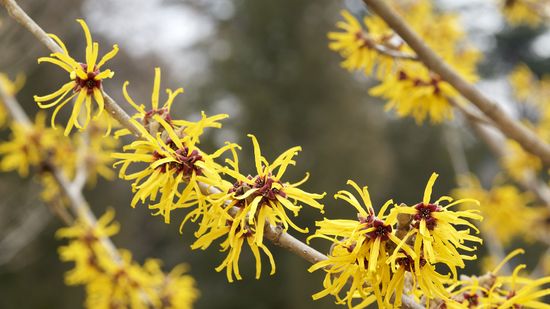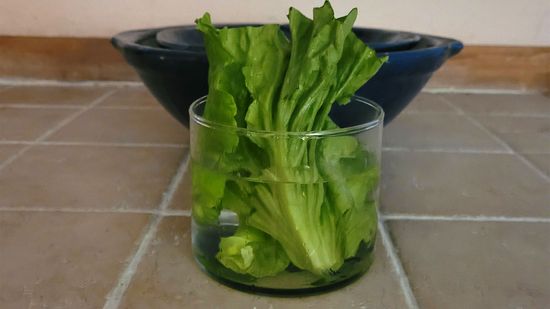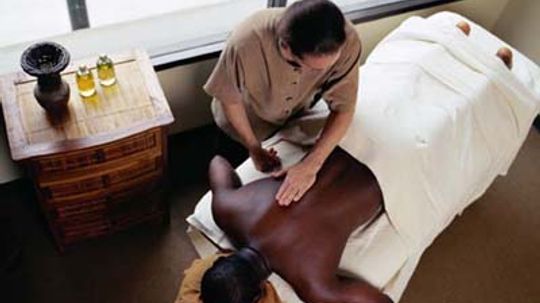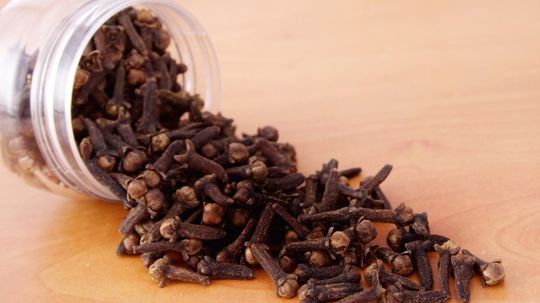Aromatherapy
Aromatherapy is an alternative medicine that uses the smell from essential oils to treat conditions. Learn more about aromatherapy, including what it exactly is, how to practice it and what role essential oils play.

Sound Frequency Healing: The Power of Vibrations for Well-Being

Himalayan Salt Lamps: Health Benefits or Hype?

Does Kombucha Really Have Health Benefits?

Kava Is Natural and Legal, But Is It Safe?

6 Handy Uses for Witch Hazel

Why People Are Downing Chlorophyll, the Plant Pigment

Can Lettuce Water Really Help You Sleep?

9 Refreshing Uses for Peppermint Oil

How to Safely Use a Neti Pot

What Does Science Say About the Health Benefits of Cordyceps?

How to Treat Fatigue with Traditional Chinese Medicine

How to Treat Headaches with Traditional Chinese Medicine
Learn More
Burning some essential oils around your home may make it smell really nice. But could there be some side effects you should be worried about?
By Alia Hoyt
Essential oils, the fragrant, concentrated liquids extracted from the flowers, leaves, roots, bark, and fruit of an aromatic plant, are the main ingredients in aromatherapy treatments. Learn about essential oils and their properties.
Our aromatherapy treatments are for relatively minor problems that you would normally treat at home. These treatment recipes were designed for you to start making your own aromatherapy preparations. Learn how to treat common conditions with aromatherapy.
Advertisement
Make our ZZZZ Formula and get a good night's sleep. Using our quick recipe, you can make your own aromatherapy insomnia treatment, and you can tailor its scent to your own preferences.
You don't need to spend lots of money on Tiger Balm or similar manufactured liniments for joint pain. Instead, you can make your own using readily available ingredients and our easy instructions.
If menopause symptoms are bothering you, aromatherapy might be part of the solution. Learn how to make this body oil, which can help to relieve hot flashes, mood swings, and other symptoms.
Soothe a pounding head -- even a migraine -- when you learn how to get rid of a headache with aromatherapy. Find out how to make hot or cool compresses and warming hand soaks with essential oils.
Advertisement
Painful herpes outbreaks can be shortened and relieved when you learn how to treat herpes with aromatherapy. Find out how to prepare a mixture of essential oils for the affected area.
Itchy, red hives are caused by food or other allergies, but if you have them, you just want to make the itching stop! Follow these tips to get rid of hives with aromatherapy.
Nothing is worse than a bout of nausea, intestinal gas, or stomach pains caused by stress, so find relief naturally with a selection of essential oils. Learn how to use aromatherapy for nausea relief.
You don't need to just put up with the irritability, bloating, and pain that many women experience from PMS. Instead, you can make these simple aromatherapy remedies to help soothe the symptoms.
Advertisement
Singers have always used essential oils to treat sore throats. You can too with our remedies. The spray is both an anti-inflammatory and an antiseptic. The neck wrap soothes the pain of swollen glands.
Enjoy a hot bath or a soothing massage and relax with our aromatherapy mixtures. The essential oils they contain are known to relieve stress, and you can make them yourself with our easy instructions.
Fragrances can lift one's mood, so aromatherapy for depression uses the scents of essential oils to ease anxiety, paranoia, and mental fatigue. Learn how to use neroli or petitgrain and other essential oils as antidepressants.
Working at a desk or computer screen can leave your eyes over-tired. But there are simple ways to treat eye strain with aromatherapy. Learn how to make warm or cool compresses with essential oils.
Advertisement
The scent and flavor known as wintergreen owes its origin to birch, which also flavors many beverages and candies. This essential oil has astringent properties and can prevent dandruff. Learn how birch is used in aromatherapy.
Wardrobes and chests made from cedarwood will repel insects. Cedarwood essential oil is known to fight acne, promote circulation, and clear mucus. Use cedarwood oil to treat insect bites. Learn how cedarwood is used in aromatherapy.
Chamomile is most familiar as a tea known to relax nerves, settle the stomach, and enhance appetite. This essential oil has is gentle enough to use on infants and is good for many skin ailments. Learn how chamomile is used in aromatherapy.
Cinnamon popularity as a spice has overshadowed its many healing properties. Cinnamon essential oil is used as a mental and physical stimulant. This essential oil has digestive and mood-enhancing properties. Learn how cinnamon is used in aromatherapy.
Advertisement
Clary sage has aromatherapy applications that enhance clarity of mind and fight depression. Clary sage essential oil flavors many beverages, candies, and clove cigarettes. Learn how clary sage is used in aromatherapy.
Cloves have many stimulating properties in aromatherapy. This essential oil has antifungal and antibiotic properties, and can soothe a teething baby's gums. Learn how clove is used in aromatherapy.
Cypress essential oil is great for relaxing muscles, and promoting clarity of thought. This essential oil has antiseptic and blood-stanching properties. Learn how cypress is used in aromatherapy.
Highly antiseptic eucalyptus oil has long been used to treat all manner of infections. This essential oil has antiviral and antibiotic properties, and can relieve joint pain. Learn how eucalyptus is used in aromatherapy.
Advertisement
Fir is well known as a popular Christmas tree. The tree and its scent were associated with rebirth. Fir essential oil has antiseptic properties and can soothe muscle pain such as rheumatism. Learn how fir is used in aromatherapy.
Frankincense essential oil is widely associated with religious ceremonies and events, and it is a valuable substance for its spiritually uplifting qualities. Learn how frankincense is used in aromatherapy.







